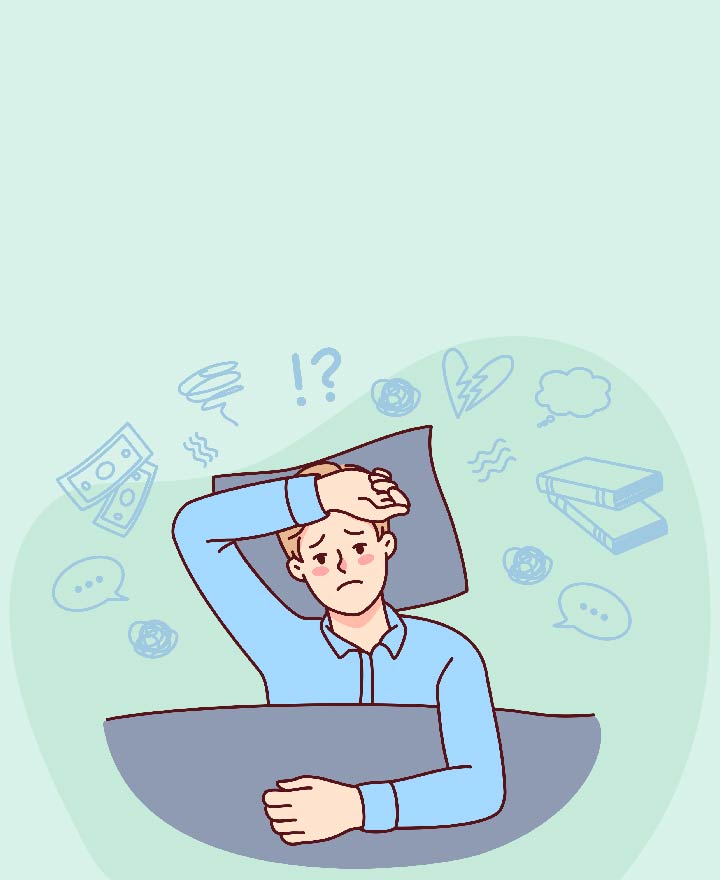

What Are Those Sudden Leg Cramps at Night?
Nocturnal leg cramps are sudden, painful muscle spasms that usually happen at night, mostly in the calves or feet. They can last a few seconds to minutes and sometimes leave the muscle sore. These cramps tend to show up more often in older adults, pregnant women or anyone who spends a lot of time on their feet. Figuring out why they happen and how to deal with them can really help keep those painful wake-ups to a minimum. Take a look at this article to learn what nocturnal leg cramps are, what induces them and how to stop leg cramps at night.
What Are Nocturnal Leg Cramps?
Nocturnal leg cramps, sometimes referred to as 'charley horses', are involuntary muscle contractions that occur during periods of rest, most commonly at night. These cramps are typically localised and involve one or more muscles tightening without warning. While they most often affect the gastrocnemius muscle in the calf, other muscles such as the hamstrings (back of each thigh) and quadriceps (front of each thigh) can also be involved.
What Causes Leg Cramps at Night?
Doctors aren’t completely sure what causes calf muscle cramps at night, but they believe it may have to do with mixed signals between the nerves and muscles. For example, your brain might send a message to your leg to move while you are dreaming, causing your calf or foot muscles to suddenly tighten. Several factors can increase your chances of getting these cramps.
Here are some reasons for leg cramps at night:
1. Age and Lifestyle Habits
Certain age-related factors and daily habits can increase the chances of getting leg cramps at night. These include:
• Being over 50
• Sitting or standing for long stretches, especially on hard surfaces
• Overusing your leg muscles during the day
• Not drinking enough water
2. Medical Conditions
Certain health issues can also make you more likely to get leg cramps, including:
• Diabetes
• Parkinson’s disease and other nerve-related conditions
• Hypothyroidism (low thyroid hormone)
• Flat feet
• Blood flow problems or nerve damage
• Alcohol abuse
• Low blood sugar (hypoglycaemia)
Leg cramps can also happen if your body has too much or too little of certain minerals, like magnesium, potassium or calcium.
3. Pregnancy
Pregnant women, especially in the second and third trimester, often experience leg cramps at night. This may be due to:
• Low levels of calcium or magnesium
• Extra weight putting pressure on the leg muscles
• Changes in blood circulation
• Dehydration
4. Diabetes-Related Causes
People with type 2 diabetes may experience leg cramps due to:
• Nerve damage (diabetic neuropathy)
• Poor blood flow from peripheral artery disease (PAD)
• Electrolyte imbalance caused by high or low blood sugar
5. Medications That Can Trigger Cramps
Some medicines can increase the risk of nighttime leg cramps. These include:
• Certain painkillers
• Diuretics (used for high blood pressure or heart issues)
• Antidepressants
• Cholesterol-lowering drugs (statins)
• Sleep aids
• Seizure and nerve pain medications
Diagnosis
There isn’t a specific test to confirm nocturnal leg cramps, but your doctor can often figure out the cause by asking the right questions and doing some basic checks.
To help with the diagnosis, be ready to share details like:
• When the cramps started
• How often they happen
• What the pain feels like (sharp, tight, throbbing, etc.)
• How long do the cramps last
• Whether they happen at night, after activity, or randomly
• Any other symptoms you have noticed
The doctor can also ask about your medical history and any medications you are taking. In some cases, they may do a physical exam and order routine tests, such as blood or urine tests. These tests can help spot any underlying issues, such as a vitamin or mineral imbalance, diabetes or thyroid problems, that may be causing the cramps.
Treatment
Most leg cramps go away on their own, but here are some leg cramp at night treatments you can try to get relief:
• Stretch the muscle:
Slowly extend your leg and pull your toes up toward you to ease the cramp.
• Massage the area:
Gently rubbing the affected muscle can help release the tightness and improve blood flow.
• Use warmth:
Placing a warm cloth or heating pad on the cramped area can help relax the muscle.
• Keep yourself hydrated:
Drinking water regularly during the day supports healthy muscle function and may reduce the chances of cramps.
• Pain relief:
If the soreness lasts, over-the-counter pain relievers like ibuprofen (Advil) or acetaminophen (Tylenol) can help ease the discomfort.
Prevention Tips
If leg cramps are frequent, a few changes can help minimise the chances of them happening:
• Stretch your calves before bed to help relax the muscles.
• Drink enough water throughout the day.
• Avoid sitting or standing in the same position for too long. Change positions often.
• Wear supportive shoes to lessen strain on your legs.
• Eat a balanced diet with enough magnesium, potassium and calcium to support healthy muscle function.
When to Worry About Leg Cramps
Most leg cramps are harmless. But if they happen very often, are extremely painful or don’t go away, it’s a good idea to see a doctor. Also, if you notice swelling, muscle weakness or changes in skin colour, get it checked. These could be signs of a more serious problem, like poor circulation or a nerve issue.
Conclusion
Nocturnal leg cramps are a common issue that can affect your sleep and daily comfort. While they are usually harmless, frequent or severe cramps might point to an underlying health condition like diabetes, poor circulation or a mineral imbalance. If your leg cramps continue or get worse despite home remedies, it’s a good idea to consult a doctor.
One of the important components of our overall wellness is also being financially secured. Healthcare emergencies can happen any time, but a good health insurance policy can protect you from such uncertain situations. To know more about Wellness and other health related tips, visit the wellness corner.
Disclaimer: This blog provides general information and discussions about health and related subjects. The information and other content provided in this blog, website or any linked materials are not intended and should not be considered or used as a substitute for medical advice, diagnosis or treatment. Kindly contact your doctor before starting a new medicine or health regime.
Related Articles
How to Stop Joint Pain when it Rains?
Effective Knee Pain Exercises You Should Try
Benefits of Leg Stretching Exercises
Best Exercises to Ease Sciatica Pain
Leg Raise Exercise for Core Strength
Published on July 8, 2025















 Health Insurance
Health Insurance  Travel Insurance
Travel Insurance  Car Insurance
Car Insurance  Cyber Insurance
Cyber Insurance  Critical Illness Insurance
Critical Illness Insurance
 Pet Insurance
Pet Insurance
 Bike/Two Wheeler Insurance
Bike/Two Wheeler Insurance  Home Insurance
Home Insurance  Third Party Vehicle Ins.
Third Party Vehicle Ins.  Tractor Insurance
Tractor Insurance  Goods Carrying Vehicle Ins.
Goods Carrying Vehicle Ins.  Passenger Carrying Vehicle Ins.
Passenger Carrying Vehicle Ins.  Compulsory Personal Accident Insurance
Compulsory Personal Accident Insurance  Travel Insurance
Travel Insurance  Rural
Rural